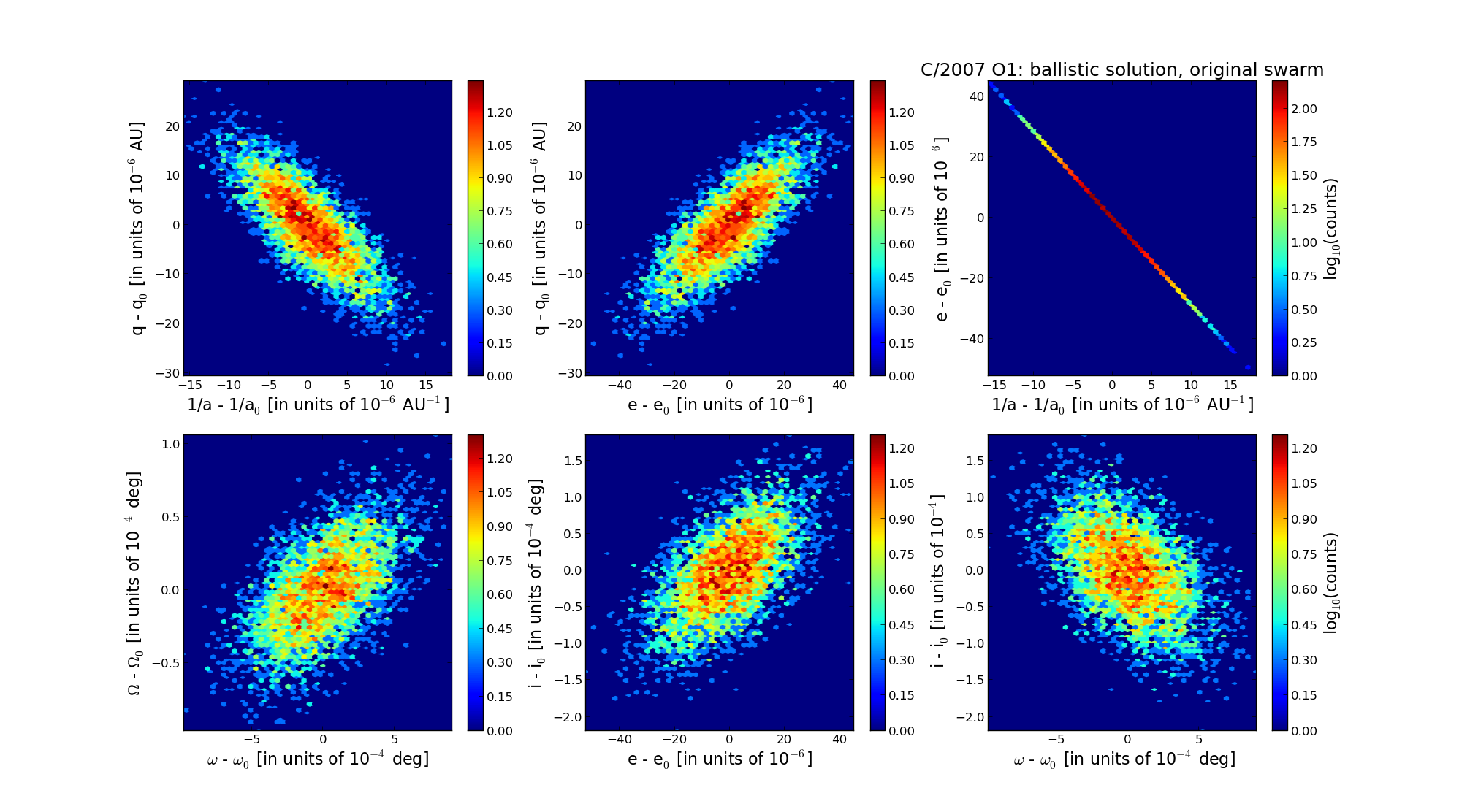| Solar System Dynamics & Planetology Group |
 |
C/2007 O1 LINEAR |  |
| Solar System Dynamics & Planetology Group |
 |
C/2007 O1 LINEAR |  |

| number of observations | 183 |
| number of residuals | 336 |
| data interval | 2006 Apr. 2 — 2007 Nov. 13 |
| rms [arcsec] | 0.47 |
| orbit quality class | 1a |
| Epoch (TT) | 20070520.0 | = JD 2454240.5 |
| time of perihelion passage (TT) | 20070603.298842 | ± 0.001027 |
| perihelion distance | 2.87671670 | ± 0.00000778 |
| eccentricity | 1.00498807 | ± 0.00001343 |
| argument of perihelion[deg] | 159.400786 | ± 0.000267 |
| longitude of the ascending node [deg] | 116.235193 | ± 0.000027 |
| inclination[deg] | 24.379508 | ± 0.000055 |
| inverse semimajor axis [10-6 au-1] | -1733.95 | ± 4.66 |

| Epoch (TT) | 17051010.0 | |
| time of perihelion passage (TT) | 20070604.665713 | ± 0.001066 |
| perihelion distance | 2.86341260 | ± 0.00000781 |
| eccentricity | 0.99993311 | ± 0.00001347 |
| argument of perihelion[deg] | 159.569308 | ± 0.000270 |
| longitude of the ascending node [deg] | 116.490041 | ± 0.000029 |
| inclination[deg] | 24.427700 | ± 0.000055 |
| inverse semimajor axis [10-6 au-1] | 23.36 | ± 4.70 |
| Epoch (TT) | 23030529.0 | |
| time of perihelion passage (TT) | 20070602.892064 | ± 0.000995 |
| perihelion distance | 2.86863333 | ± 0.00000764 |
| eccentricity | 1.00142522 | ± 0.00001346 |
| argument of perihelion[deg] | 159.219601 | ± 0.000266 |
| longitude of the ascending node [deg] | 116.234733 | ± 0.000026 |
| inclination[deg] | 24.398264 | ± 0.000055 |
| inverse semimajor axis [10-6 au-1] | -496.83 | ± 4.69 |